Seville Spain Travel Guide A Vagabond Life
Travelling to Seville is like stepping into a vibrant tapestry of history, culture, and sensory delights. Nestled in the heart of southern Spain’s Andalusia region, this enchanting city beckons with its rich Moorish heritage, flamenco rhythms, and architectural wonders. Seville’s history is as diverse as it is captivating, with roots tracing back to the Roman era, followed by a flourishing period of Moorish rule that left an indelible mark on the city. The iconic Alcázar of Seville, a UNESCO World Heritage site, stands as a testament to this Moorish influence, boasting intricate tilework, lush gardens, and intricate architecture that transport visitors to a bygone era. Later, Seville became a thriving hub of exploration and trade during the Age of Discovery, serving as the gateway to the New World. The city’s striking Cathedral, another UNESCO gem, is a symbol of Spain’s colonial riches and houses the tomb of Christopher Columbus.
Beyond its historical treasures, Seville offers a vibrant cultural scene that captivates travelers at every turn. Stroll through the narrow, winding streets of the historic Jewish Quarter, known as Santa Cruz, where charming patios, tapas bars, and boutique shops await. Embrace the passion of flamenco in local venues, where the music and dance transcend entertainment and become an emotional experience. Seville’s culinary landscape is equally enticing, offering traditional Andalusian dishes like gazpacho, salmorejo, and an array of delicious tapas. With its warm climate, lively festivals, and a genuine warmth in its people, Seville is a city that invites exploration and promises unforgettable memories.
Seville Spain Map
s
Seville Spain Map

Seville Spain
Things To See & Do In Seville Spain
Alcazar of Seville Spain
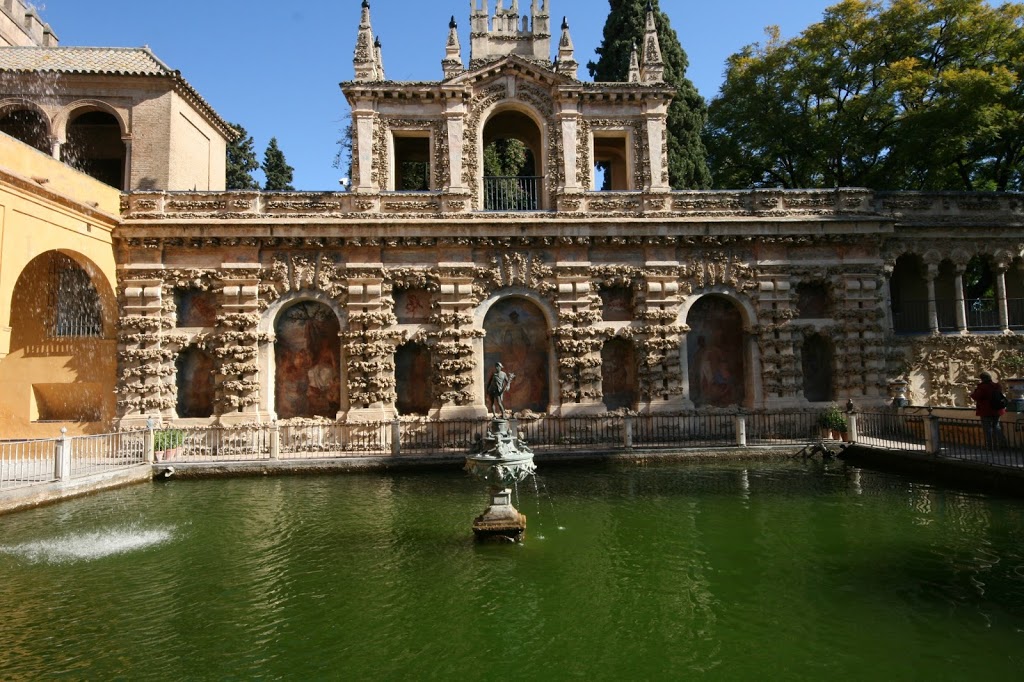
Alcazar of Seville Spain
The Royal Alcazar of Seville is a breathtaking architectural gem that epitomizes the city’s rich history and cultural heritage. This UNESCO World Heritage site boasts a captivating blend of architectural styles, including Moorish, Gothic, Renaissance, and Baroque influences. Its history dates back to the 10th century when it was constructed as a fort for Muslim rulers. Over the centuries, it has evolved into a stunning palace complex that has hosted royalty and dignitaries from around the world.
The palace itself is a testament to the intricate craftsmanship of its builders, featuring beautifully adorned rooms, courtyards, and halls. The Palacio de Don Pedro, in particular, stands out with its intricate stucco work and the Hall of Ambassadors, a majestic space adorned with a stunning dome. The Patio de las Doncellas, with its elegant arches and tranquil reflecting pool, offers a serene oasis within the palace.
One of the most enchanting features of the Royal Alcazar is its lush and meticulously designed gardens. The gardens are a harmonious blend of Islamic, Renaissance, and Mudejar styles, offering visitors a sensory delight of fragrant flowers, citrus groves, and tranquil fountains. The Mercury Pond, a highlight within the gardens, is a stunning reflection pool adorned with intricate tilework and surrounded by vibrant greenery, creating a serene atmosphere for contemplation. Exploring the Royal Alcazar and its magnificent gardens is like stepping into a fairy tale, where centuries of history, artistry, and natural beauty converge in a breathtaking setting.
The Top 5 Things to See within The Royal Alcazar of Seville:
The Palacio de Don Pedro: Also known as the Mudejar Palace, this section of the Alcazar is an architectural masterpiece. Its intricate stucco work, beautifully adorned rooms, and the Hall of Ambassadors with its stunning dome are some of the highlights.
The Patio de las Doncellas: This courtyard is an exquisite example of Mudejar architecture. With its elegant arches, tranquil reflecting pool, and intricate tilework, it’s a serene oasis within the palace.
The Salón de los Embajadores (Hall of Ambassadors): Located within the Palacio de Don Pedro, this hall is a grand space with a stunning dome. It’s famous for its intricate decorative elements, including stunning tilework and gilded stucco.
The Gardens: The Alcazar’s lush gardens are a delight to explore. They feature a harmonious blend of Islamic, Renaissance, and Mudejar styles. The gardens are adorned with fragrant flowers, serene fountains, and vibrant greenery, offering a tranquil escape within the palace complex.
The Mercury Pond (Estanque de Mercurio): This reflective pool is a captivating feature within the gardens. It’s adorned with intricate tilework and surrounded by lush vegetation, creating a serene and photogenic setting for visitors.
These attractions collectively showcase the Alcazar’s architectural brilliance, its historical significance, and the enchanting beauty of its gardens. A visit to the Royal Alcazar is like stepping into a fairytale palace, and these sights are some of the highlights that make it a must-see destination in Seville.
Cathedral of Seville & Giralda
Cathedral of Seville & Giralda
The Cathedral of Seville and the Giralda tower form an iconic and awe-inspiring architectural ensemble that defines the skyline of Seville, Spain. The cathedral, officially known as the Cathedral of Saint Mary of the See, is the largest Gothic cathedral in the world and a UNESCO World Heritage Site. Its history dates back to the 15th century when it was constructed on the site of a former mosque. The cathedral’s construction was initiated to demonstrate the city’s newfound wealth and power after the Reconquista, the Christian reconquest of Spain from the Moors. As a result, it incorporated elements of both Gothic and Renaissance architectural styles, resulting in a unique blend of beauty and grandeur.
The Giralda, originally the minaret of the mosque, now serves as the cathedral’s bell tower. Its construction was completed in the 12th century under Muslim rule and is a stunning example of Moorish architecture. The most fascinating aspect of the Giralda is its ascent, which can be made through a series of gently sloping ramps rather than steep stairs. This design was initially intended to allow the muezzin to ride to the top on horseback to make the call to prayer.
Today, both the Cathedral and the Giralda tower stand as symbols of Seville’s rich history, religious significance, and architectural prowess. Visitors can explore the ornate chapels, admire the breathtaking stained glass windows, and enjoy panoramic views of the city from the top of the Giralda. The combination of these two landmarks makes a visit to Seville an unforgettable journey through time and artistry.
Top 5 Things to See at Seville Cathedral and Giralda
Certainly, here are the top 5 sites to explore within the Seville Cathedral and the Giralda:
The Main Altar (Retablo Mayor): The Seville Cathedral houses a stunning Gothic main altar, featuring intricate gilded woodwork and a plethora of religious sculptures and scenes. The centerpiece is a dramatic depiction of the life of Christ, making it a must-see highlight.
Tomb of Christopher Columbus: The tomb of the famed explorer Christopher Columbus is an imposing and historically significant feature within the cathedral. It’s held aloft by four allegorical figures representing the four kingdoms of Spain during Columbus’s time.
Giralda Tower: Ascend the Giralda tower to enjoy breathtaking panoramic views of Seville. The tower’s unique ramped ascent, originally designed for the muezzin’s horse, makes the climb relatively easy and adds to the experience.
Patio de los Naranjos: This tranquil courtyard within the cathedral is adorned with fragrant orange trees and a central fountain. It’s a peaceful spot to take in the architectural details and enjoy a moment of reflection.
The Capilla Real (Royal Chapel): This ornate chapel, within the confines of the cathedral, contains the tombs of various Spanish monarchs, including Ferdinand III and his son Alfonso X. The chapel’s Gothic and Renaissance features are stunning.
These sites collectively offer a rich blend of history, art, and spirituality, making a visit to the Seville Cathedral and the Giralda an immersive experience in Spanish culture and heritage
Flamenco In Seville
Flamenco in Seville: Where Passion, Music, and Dance Converge
Seville, the heart of Andalusia in southern Spain, is not only renowned for its stunning architecture and rich history but also for being the cradle of flamenco. This passionate and expressive art form, characterized by its emotive singing, intricate guitar playing, rhythmic handclaps, and, of course, mesmerizing dance, is an integral part of Seville’s cultural fabric. For those seeking an authentic flamenco experience, Seville offers a myriad of venues where you can immerse yourself in the soul-stirring rhythms and melodies. Here are the top 5 places to see flamenco in Seville:
1. Tablao El Arenal: Situated in the historic Arenal neighborhood, Tablao El Arenal is known for its intimate atmosphere and exceptional performances. The passionate artists here skillfully convey the depth of flamenco, making it a must-visit for aficionados.
2. Tablao Los Gallos: Located in the heart of Seville’s Santa Cruz neighborhood, Tablao Los Gallos is one of the city’s oldest and most prestigious flamenco venues. The intimate setting and top-tier artists create an unforgettable evening of artistry and emotion.
3. Casa de la Memoria: This venue stands out for its commitment to preserving the essence of traditional flamenco. Casa de la Memoria hosts daily performances in a historic mansion, providing an authentic and captivating experience.
4. Tablao El Palacio Andaluz: With a spacious and elegant setting, Tablao El Palacio Andaluz offers nightly flamenco shows that feature talented dancers, singers, and guitarists. It’s an excellent place to savor the art form in style.
5. La Carbonería: For a more laid-back and bohemian ambiance, La Carbonería is a beloved spot among locals and travelers alike. The venue often hosts spontaneous flamenco performances, making each visit a unique and immersive experience.
Flamenco is not merely a performance; it’s an emotional journey into the heart and soul of Andalusia. In Seville, the birthplace of this art form, you can witness the raw passion and profound storytelling that define flamenco, and these top venues ensure you have an authentic and unforgettable encounter with this captivating cultural treasure. Whether you’re a seasoned flamenco enthusiast or a newcomer, Seville’s vibrant flamenco scene promises an experience that will resonate with you long after the final applause.
The Food of Seville
Savoring the Flavors of Seville: A Culinary Journey Through Andalusia’s Gastronomic Gem
Seville, with its rich history, vibrant culture, and warm hospitality, offers not only stunning architecture and flamenco rhythms but also a tantalizing culinary scene that will leave your taste buds dancing with delight. This Andalusian gem is a treasure trove of traditional Spanish cuisine, influenced by its Moorish heritage and abundant local produce. Here are the top 5 dishes to savor in Seville:
1. Gazpacho: As the sun beats down on Seville’s streets, nothing beats a refreshing bowl of gazpacho. This chilled tomato-based soup is a summer staple in Andalusia. Blended with ripe tomatoes, peppers, cucumbers, garlic, olive oil, and vinegar, it’s the perfect antidote to the heat.
2. Salmorejo: Similar to gazpacho but thicker in consistency, salmorejo is another cold soup hailing from Seville. Made with ripe tomatoes, bread, garlic, olive oil, and vinegar, it’s garnished with hard-boiled eggs and jamón serrano. Creamy and flavorful, it’s a delightful appetizer or light meal.
3. Espinacas con Garbanzos: This dish showcases the Moorish influence on Sevillian cuisine. It consists of sautéed spinach and chickpeas, flavored with garlic, cumin, and a splash of sherry vinegar. It’s simple yet incredibly satisfying.
4. Secreto Ibérico: A highlight for meat lovers, Secreto Ibérico is a succulent cut of pork from the Iberian pig, renowned for its rich flavor. Seasoned with just a pinch of salt, it’s typically grilled to perfection, resulting in a tender and flavorful dish.
5. Flan: To satisfy your sweet tooth, indulge in a classic Spanish dessert – flan. This creamy caramel custard is a popular way to end a meal in Seville. Its silky texture and caramelized sugar topping make it the perfect conclusion to any Sevillian feast.
While these are some of the must-try dishes in Seville, the city’s culinary offerings go far beyond. Exploring local markets, tapas bars, and traditional restaurants will reveal a world of flavors and culinary traditions that reflect the region’s rich history and cultural diversity. So, when you visit Seville, be sure to embark on a culinary adventure that will leave you with a deep appreciation for Andalusian gastronomy.
Spain Travel Guides
Spain Travel Stories
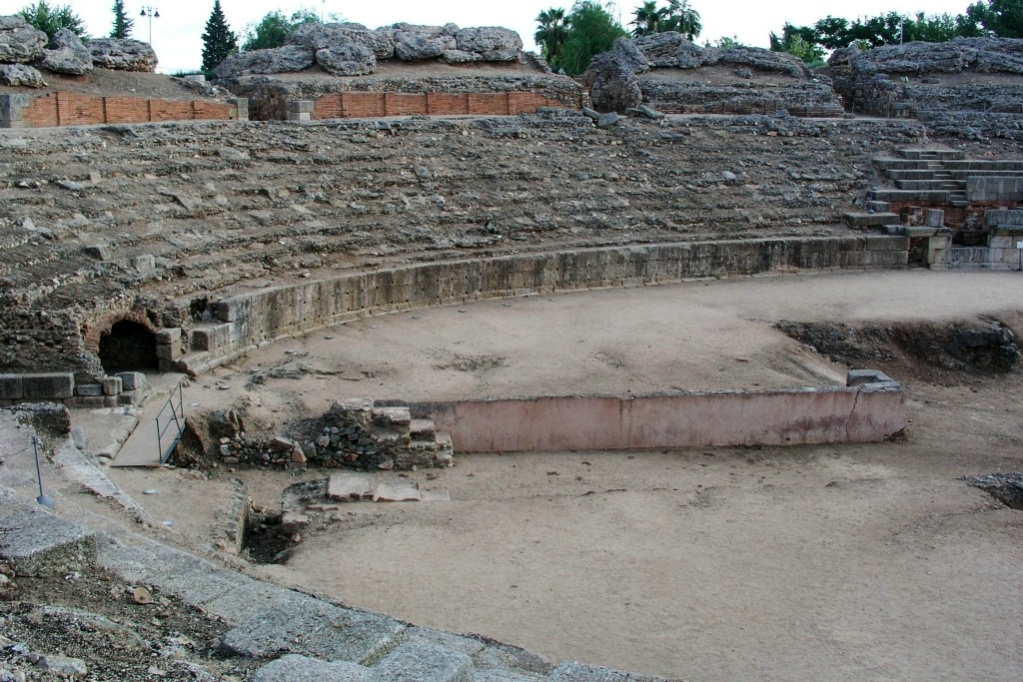
Merida Spain
Merida Spain Merida Spain: From Cordoba we took a 4 hour bus trip through pretty countryside with the famed white Andalusian villages dotted on the
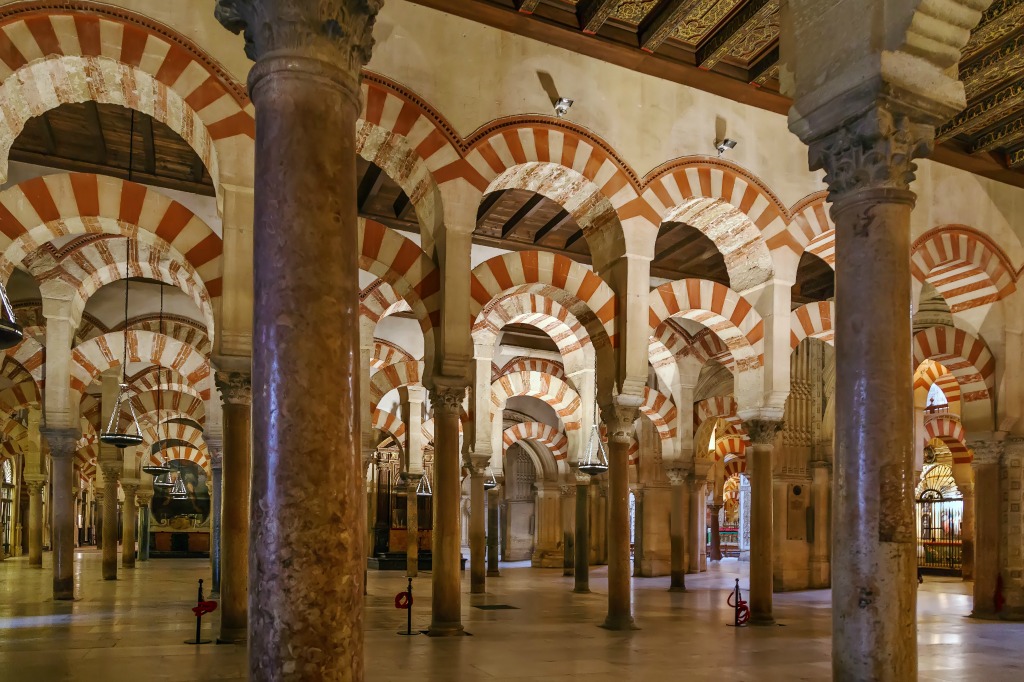
Cordoba Spain
Cordoba Spain – From Seville we caught a train to the historic town of Cordoba which took a couple of hours. Cordoba is another
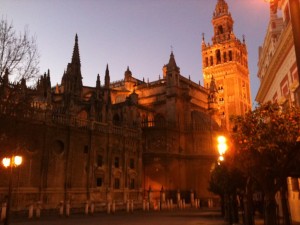
Seville Spain
Seville Spain Seville: To escape the bitter cold and snow in SW France we jumped on a cheap flight to Southern Spain, first stop Seville.
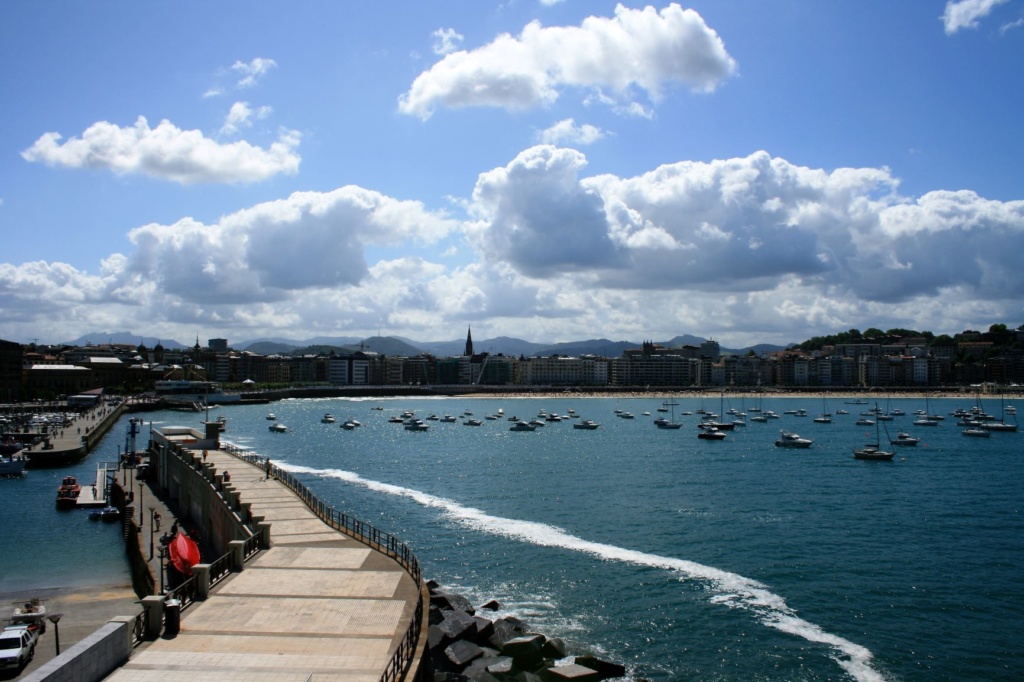
Spain
Spain – Barcelona Spain Spain – We arrived in Barcelona after a long flight via London buggered, but in true backpacker style and wanting to